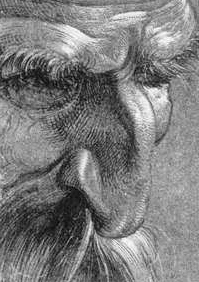Ask the Art Professor: How can I learn to draw noses?
Albrecht Durer
Welcome to “Ask the Art Professor“! Essentially an advice column for visual artists, this is your chance to ask me your questions about being an artist, the creative process, career advice, a technical question about a material, etc. Anything from the smallest technical question to the large and philosophical is welcome. I’ll do my best to provide a thorough, comprehensive answer to your question. Submit your question by emailing me at clara(at)claralieu.com, or by posting here on this blog. All questions will be posted anonymously. Read an archive of past articles here.
Here’s today’s question:
“I have a really difficult time trying to draw noses. How can I learn to draw them?”
People tell me all the time that that they can’t draw _______________. If you’re having an issue drawing a specific subject, it’s because you are thinking too much about the end product and on achieving a convincing likeness. Instead, you need to be focusing on the basics of drawing that will get you there.
Approach drawing every subject the same way. (read this article on gesture drawing for drawing tips) Many people think that each subject demands a strategy specific to that subject only, when really your strategy for every subject should be fundamentally the same. I would draw a rabbit using the same strategy as I would if I were drawing a lemon or a bicycle.
The next time you sit down to draw a nose, forget that you’re drawing a nose. Instead, look at the nose as an abstract series of forms that you’re observing, and don’t let yourself get distracted by how it looks as you draw.
I was a portrait painter for a few years after I finished my undergraduate degree. I used to put unnecessary pressure on myself to achieve a perfect likeness, which of course was hugely problematic because that’s the whole point of being a portrait painter. I would worry and stress the whole time as I was painting about the outcome of the finished piece. Naturally, this was counter productive, as the more I worried the less and less of a likeness I was able to create. Once I started to block out my mental concerns of achieving a likeness, and started to focus exclusively on seeing abstract forms and relationships in the face, the painting immediately got better.
Remember that the nose is just one small component of a head, and that for a nose to work, it has to fit in with and relate to everything else on the head. The classic mistake I see everywhere with portraits is people starting out by drawing the eyes, nose, and mouth. The problem with this approach is that there is absolutely nothing structural about the eyes, nose, and mouth. The eyes are soft squishy spheres, the nose is cartilage, and the mouth is just soft tissue. Instead, structural forms like the forehead, the brow, the cheek bones, the jaw bone, and the chin are what need to be addressed first in a portrait. Once these structural forms are established, drawing in the eyes, nose, and mouth should be like dropping the cherry on the sundae.
The reason why portraits are so challenging for many people is because they carry significant psychological baggage. We see faces all the time, and they are one of the primary forms of visual communication between humans. Let’s face it, you wouldn’t be judgmental of the way someone draws a pear the way you would with a portrait. With a portrait, anyone can always tell when something is a little “off”, even if they can’t point out exactly where the problem is.
Finally, I think that noses are funny looking forms to begin. (Check out these wonderful grotesque portraits by Leonardo da Vinci below) If you accept that, noses will be easier to deal with in your drawings.
Leonardo da Vinci
Related articles:
“What is a gesture drawing?”
“Is drawing considered an innate talent or a craft, which can be learned by anyone?”
“How can I learn to shade objects in my drawings?”
“How can I draw what I see in my head?”
“What is the best way to practice my drawing skills?”
“How can you learn to draw hair?”
“How do you get yourself to practice drawing?”
“What is the best way to simplify the human figure?”







